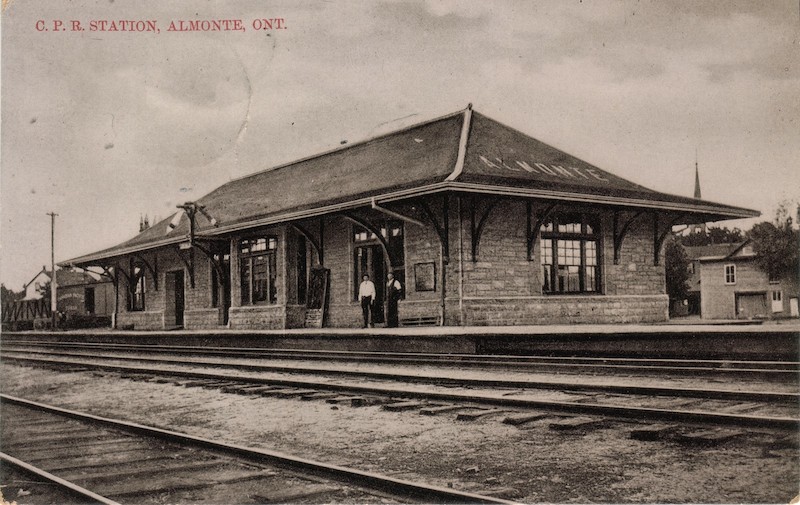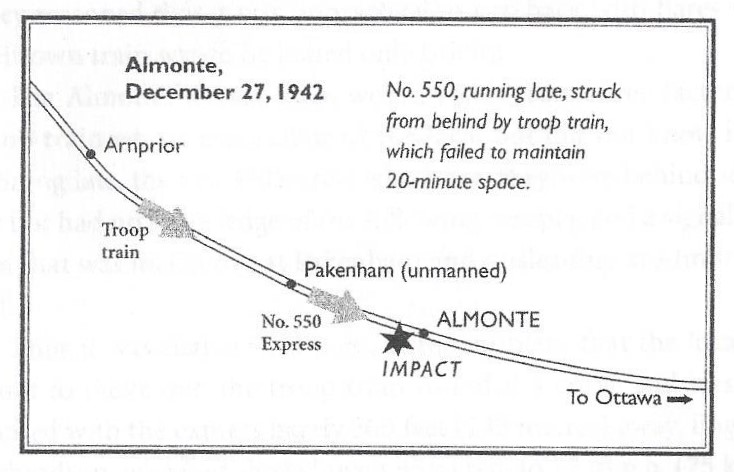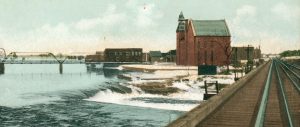A Perfect Storm
Christmas had come and gone. Many travelers were heading back to Ottawa or Toronto for work Monday morning, meaning there were more passengers than usual at the stations. Because there were so many holiday passengers, the Ottawa Valley Local was taking longer to load at each stop.
Bill Richardson and John Howard, the experienced engineer and conductor of the troop train, were expected to run a fast train, yet keep a safe distance behind the Local. It was easier said than done. The troop train had no speed gauge and the men were unable to know how close or far away they were from the Local until they reached each station.
Saving Time
At Renfrew Station, Richardson waited 15 minutes to restore a 20-minute gap between his train and the Local. At Arnprior Station, an additional 15 minutes. At the following station in Pakenham, the light shone a reassuring green and the troop train continued on to Almonte without stopping. But the green light was wrong. Pakenham Station, unmanned that night, had set the light to green. Had an attendant been there, it would have been red to stop the troop train, and save the rapidly shrinking time gap.
A Moment Too Late
The crew of the passenger train was unaware of the troop train following behind them. However, warning flares were supposed to be used to protect a train that was behind schedule, so that it was not overtaken by another. This standard procedure was not followed. This, combined with the poor weather that night meant Richardson couldn’t see the Local until the headlight of his engine reflected off the rear glass door of the coach. By that point, it was too late.




